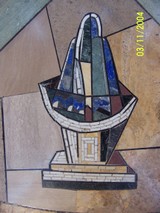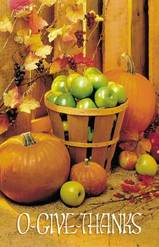For those of you who are especially appreciative of good Christmas food-- enjoy. It's a good thing.
Of course, Matthew 4:4.
So, if you're still hungry, then what you really need is this, courtesy of bishop N.T. Wright.Continue reading...
Welcome! This website is intended for thoughtful but harried worship planners. We invite you to explore the resources available here for planning and leading worship.
Since this is a collaborative effort, we also invite you to contribute. All are welcome to comment freely; if you are interested in becoming a posting member of this community, please click here.
If you don't want to post regularly, but do have a question, or want us the community to address a particular issue, feel free to email.
For those of you who are especially appreciative of good Christmas food-- enjoy. It's a good thing.
Of course, Matthew 4:4.
So, if you're still hungry, then what you really need is this, courtesy of bishop N.T. Wright.Continue reading...
In addition to our recent post on Mother’s Day I would add a few more seeds for thought. During the season of Easter it is appropriate to remember our baptism each Sunday service. In re-membering our baptism we are re-minded that God has claimed us as children and we have made promises to God to live into the life of Christ. This means promises to serve others (especially the “least of these”), to be faithful to prayer, breaking bread and taking care of the community of faith as any has need (yes, I’m evoking the last part of Acts chapter 2). During the rite of baptism the community also makes vows to love, care and nurture those God is claiming through water and the Spirit. We are also called to nurture each other in the faith.
Remembering our baptism this Mother’s Day may be a way to honor both the season of Easter and mothers. You may begin the service standing by the font, giving thanks for water, God’s promises to us and reminding the community of the promises we make to each other during the time of baptism. One resource for remembering baptism can be found from the ELCA’s Holy Baptism and Related Rites. Perhaps on this day we can accentuate the vows to love and care for one another. This is a way you can talk about how mothers, at their best, who live into these promises of baptism through their care and nurture of children (not just their own but all children of the community). In this way mothers, and Mother’s Day points back to baptism and a life in Christ as opposed to the worship pointing to a cultural holiday.
The picture is of a baptismal font from a mosaic on the floor of Coventry Cathedral in Coventry, England.
Continue reading... Dr. Steven Taylor is the founding pastor of Graceway Baptist Church in Ellerslie, New Zealand. He has a PhD on the Emerging Church and a Masters in Theology in communicating the cross in a postmodern world. Steve recently did a course at Fuller Seminary entitled “Communicating the Biblical Text in a PostModern Culture” in July.
Dr. Steven Taylor is the founding pastor of Graceway Baptist Church in Ellerslie, New Zealand. He has a PhD on the Emerging Church and a Masters in Theology in communicating the cross in a postmodern world. Steve recently did a course at Fuller Seminary entitled “Communicating the Biblical Text in a PostModern Culture” in July.
He argues that to communicate the biblical text for today’s context requires one to “incarnate, indwell, our culture.” Taylor goes on to use the phrase “DJing” with respect to the community. A record DJ learns the historical stories (old records) and uses them authentically in contemporary culture and integrates them into the community's stories. There is too much to summarize here, but do look for his book “The Out of Bounds Church: Learning to Create a Community of Faith in a Culture of Change” from Zondervan.
Taylor cites Bono of U2 as a person who effectively DJs today. According to Taylor, Bono is in fact a worship leader for over 40,000 people; Bono recontextualizes the biblical text and leads concert goers into a time of community worship and prayer. Taylor plays the “Vertigo ‘05” DVD and shows us how Bono is leading worship. This intrigued me to the point that Dr. Taylor and I discussed this further after the workshop. The following is from Steve’s article “7 Things I learnt from Bono about Worship Leading.”
1. Connect uniquely. In the Vertigo DVD, Bono speaks about Chicago and his memories of Chicago. He makes a unique connection with context, day, and time.
2. Engage through familiarity. Bono includes songs that resonate with previous experiences and previous encounters.
3. Use repetition to call forth prayer. Bono uses the repetitive “Hallelujah.” It is easy to sing. The simple repetition enables the audience to sing with the band.
4. Secure a 5th (visual) band member. U2 now has a 5th member of the band to add a visual layer to the experience. A wise worship leader will look to add not just singers or musicians, but a “visual” person to their team.
5. Create hope by drawing the best from the past. Bono tells the audience in the Vertigo DVD, “We as a band are looking to the future. We’re taking the best of the past and moving forward with hope.”
6. Plan participation. Bono can draw one boy from the audience to sing to, one woman from the audience to dance with. He uses repetition to call forth prayer and encourage congregational singing.
7. Invoke passionate practices. Bono invites the audience to hall out their cell phones and to text “Make Poverty History campaign.” A worship leader turns singing into action. He turns entertainment into justice.Continue reading...
 On Thanksgiving Day many churches offer a very traditional worship service: Psalm 100, a litany of thanksgiving, “Come, You Thankful People, Come.” On a day when we look back with gratitude at God’s good gifts to us, it makes sense to make use of the work and wisdom of our forebears and to worship using that which is tried and true. Other congregations seek innovation: pilgrim puppets behind the pulpit, prayers of thanks colored (not written) in crayon on scraps of paper and dropped in the offering plate.
On Thanksgiving Day many churches offer a very traditional worship service: Psalm 100, a litany of thanksgiving, “Come, You Thankful People, Come.” On a day when we look back with gratitude at God’s good gifts to us, it makes sense to make use of the work and wisdom of our forebears and to worship using that which is tried and true. Other congregations seek innovation: pilgrim puppets behind the pulpit, prayers of thanks colored (not written) in crayon on scraps of paper and dropped in the offering plate.
Our culture craves novelty, which may explain—but doesn’t necessarily commend—our thirst for it. A more laudable urge is to offer in our worship not a stale tradition, repeated out of habit, but something original: our creative expression, our prayers and words and music, our very selves. We want to offer something fresh and new. But must it be an either/or choice? Many congregations are very successful in their efforts to examine the tried and true traditions (often more true than actually tried), identify the best in them, and then freshen them in ways sensitive to their contexts. Here are a few ideas...
***
Call to Worship
Psalm 100 is just the right Scripture to use as a call to worship on Thanksgiving Day. It’s familiar, and it summons God’s people both to worship and to give thanks. But the elevated diction of most psalm translations, and the formal quiet out of which calls to worship are often spoken, can diminish the psalm’s affective energy. To generate enthusiasm, some congregations bring out their best thespian/liturgist to lead the reading with strong voice and grand gesture. But the right song might work as well—if not better—to encourage rather than coerce the congregation into eager, participative praise. For example, teach and then sing the song “Come, All You People” (it can be found in the hymnal supplement Sing! A New Creation) at the very start of the service, and let the energy leak into the responsive reading of Psalm 100 as a call to worship. Let it leak by maintaining a soft percussive pulse, and maybe a low bass drone, throughout the speaking. Then reprise the song afterward, and the service will have begun with faithfulness and vigor. (See the music here, hear it here.)Continue reading...